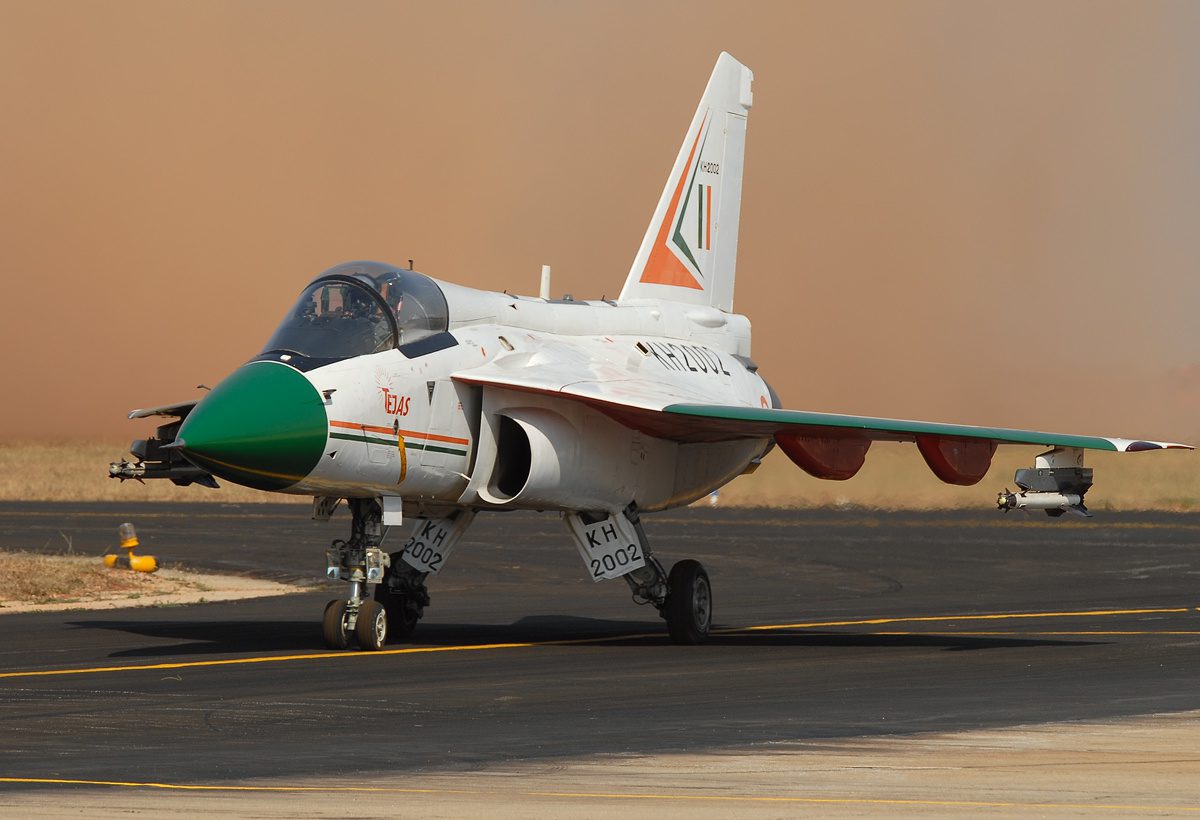Indian Air Force officials and officers are reportedly extremely dismayed and demoralized due to the Indian government ordering LCA Tejas at Aero India 2021 for a variety of reasons, primarily due to the Tejas aircraft suffering from basic design flaws that have not been dealt with by its manufacturer despite working on numerous Tejas prototypes for more than 35 years. Due to these, over 60% of the LCA Tejas fleet is always grounded. This abysmal availability factor is the reason the Indian Air Force had twice previously rejected India’s indigenous jet, but now the Indian government has rushed through a $6.25 Billion dollar order for 83 LCA Tejas aircrafts.
Another reason for resentment among the upper echelons of the Indian Air Force is the unusually long delivery time for the ordered aircraft with the first batch aircraft to be delivered not before 2024. With the rest being supplied by 2030 (that is if HAL can keep up with the production schedule, a concern amply displayed with the 35-year history of the LCA development program).
Most of the Indian Airforce frontline Tejas fighters that have so far been inducted by the Indian Air Force are facing critical issues, such as shortfalls in meeting the engine thrust and other parameters such as weight of the aircraft, fuel capacity, pilot protection from the front against cannon fire due to the thin canopy. Moreover, Tejas is supposed to be capable of firing R77, I-Derby ER & India’s indigenous Astra missiles in Beyond Visual Range (BVR), while for the Visual Range combat, it should be carrying R73, ASRAAM & Python-5 missiles but the Tejas aircraft which Indian Airforce Operates are mostly of IOC Standards which are 16 in Number in the No 45 Squadron “Flying Daggers” are not capable to fire BVR Missiles. Furthermore, they have old software, limited maximum speed, old avionics, etc. This means that the Tejas Squadron which is operational in IAF is far behind the capabilities which Tejas is supposed to have on paper., while the couple of FOC standard aircraft delivered by HAL to IAF is also inferior. They can only fire R73 & Derby ER missiles in which the I-Derby has a maximum range of 50 Kms and the effective range will be around 30-40 Kms. Other missiles are not suitable for Tejas since their control surfaces are a big hurdle to integrate them. Tejas has a small airframe with a 2nd generation cranked Delta Wing design with one of the poorest aspect ratios for a combat aircraft in aviation history, of a mere 1.72 which is the function of its lift generation capacity. The higher the Aspect Ratio, the higher the thrust will be produced but since it has a poor design its powerplant will have to generate a lot of force to compliment the lack of lift, it is good in high-speed maneuvers smooth maneuvers, but it will bleed energy in low-speed maneuvering having a high stall speed, hence it will have to glide after performing a bold maneuver. Tejas will be worst performing against its counterparts in a dog fight, which is the only way for Tejas to fight since its BVR range is itself limited by the operational missiles with it. Its small airframe further affects its weapon carrying capability since the addition of bulky load will increase its air drag, which will, in turn, affect the lift being generated, hence limiting its capability in carrying Air to Surface munitions (Although Tejas is supposed to replace Jaguars & Mig21s, its real capabilities are worse than the aircraft to be replaced). It is also facing some issues with its Radar Warning Receivers (RWR) and lacks a Missile Approach Warning System (MAWS). There are also problems with the fuselage with cracks being detected in the lower fairing skin (this is an area that is most affected by G or gravity-related pressures). It is due to these grave design, performance, and safety issues that the Indian Air Force leadership did not feel confident enough to deploy even a single Tejas fighter jet with any of its variants during IAF’s failed and botched Balakot Strike Mission on 26th February 2019, and none of the Tejas aircraft at the disposal of IAF were scrambled the next day during Pakistan’s Air Force’s Operation Swift Retort that surprised IAF’s top leadership with the operational professionalism and air combat skill displayed by PAF strike package comprising of Pakistan’s fighter the JF-17A Thunder that bombed Indian Army Brigade Headquarters in occupied Kashmir.
The CAATSA sanctions on India are the Red Alert for the whole Tejas program in case India goes for Russian S-400 Missile Defense System, since Tejas & its derivatives like Mk1A, Mk2 MWF, TEDBF & ORCA are using American powerplants the GE F404 & 414 engines. The United States can halt the delivery of these engines to India in the future. Which would result in a complete shutdown of the Tejas program as well as the upcoming highly celebrated AMCA 5th generation fighter aircraft. India would have to look for alternatives to the powerplant & it is not that easy or simple, since Tejas is a small aircraft & replacing the engine will change its aerodynamics characteristics, especially in terms of speed, Maximum Takeoff Weight, Range, Power available for the Radar & Avionics, etc. which are yet, poor than what they were supposed to be.
Author: Muhammad Arslan
#TeamPakistanStrategicForum







